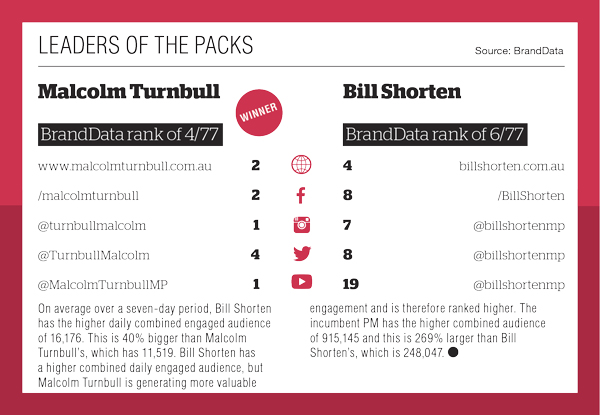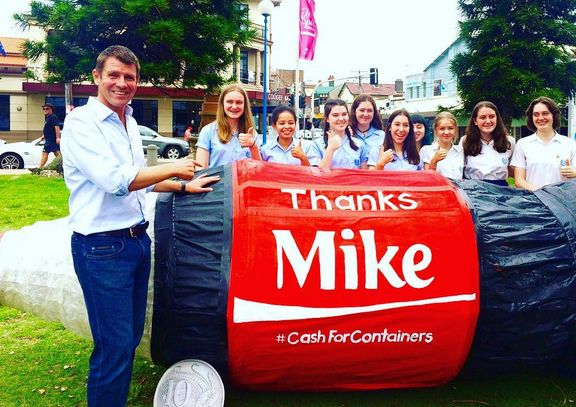
With the 2 July double dissolution election now official, advertising, mainstream and social media will become a campaign battleground. Watching how the election plays out on social could reveal more about the future of the Liberal and Labor parties than previously thought.
The federal budget has been declared and parliament dissolved. In the ‘caretaker’ phase every piece of advertising inventory booked by the federal government comes under close scrutiny to detect any dual purpose of broadcasting policy initiatives and, conveniently, rallying voter support.
Campaigns which fail to raise the alarm and garner bi-partisan approval will remain: the current $30 million domestic violence campaign ds likely to stay, but the $8 million national security campaign, which arrived at the end of April and echoes former PM John Howard’s “Be alert, not alarmed” anti-terrorism message, could be construed as Liberal scaremongering and be ditched. How Labor responds remains to be seen.
What is incredibly interesting is that, at this stage in proceedings, genuine election campaigning is thin on the ground and as we head to the polls on 2 July there will be little time for the parties to get their messages across.
Given the limited time frame, it’s easy to assume that social media will be a fast, effective way to reach a significant number of Australians, but tried and tested channels such as TV will still be the battleground for party political broadcasts.
WPP AUNZ business director Justin Di Lollo, who has worked across government campaigns, believes that a fair amount has been invested in the past in data, social and digital, but doesn’t believe any of the parties have “properly backed” the mediums yet, preferring, he said, “to use them as an add-on”.
One senior media executive who has worked closely with the major political parties told AdNews they would “not be surprised if the combined investment in social and online for the election campaign was equivalent to that of one TV spot.” Surprisingly enough, this is not out of character for politics.
Borrell Associates in the US predicts the major parties there are allocating just 9% of media budgets towards digital and social media, which totals an estimated US$1 billion. It is difficult to make such predictions in Australia.
The major political parties are not forthcoming about even the most innocuous pieces of information on how they intend to channel their media spend and agencies are reluctant to comment on politics and their involvement. No one wants to come out declaring support for one party or another.
As is standard practice, it is understood the Liberals and Labor hire crack teams comprising senior adland bosses to drive the campaigns on a very reactive basis. One party books a TV slot – another responds by booking another TV slot, and so the game continues.

Social politics
What will certainly arise, however, is that much of the social media messaging in this election and beyond will come via some of the more media savvy politicians. We will hear more from the likes of NSW Premier and Liberal politician, Mike Baird, and federal Labor’s Tanya Plibersek.
“Authenticity is a big thing in social media. I think the candidates who are the most successful are the ones who are clearly the most comfortable,” Teddy Goff, a senior adviser to Hillary Clinton on digital communications recently told US publication The Hill. And it’s playing out here as it has done in the US, UK and Canada in the last 12 months.
Both Baird and Plibersek are notable for their lack of stiffness, spin and PR. Baird, who is such of fan of Twitter he even cut the ribbon at the opening of its new offices in Sydney’s CBD, often uses Twitter, Instagram (pictured below) and Facebook to cultivate an engaged, young audience which insiders suggest shows Baird is being groomed to run for the leadership in a subsequent federal election.
“Care for a wager on the A-League?” he asked South Australia Premier Jay Weatherill on Twitter at the end of April.
Plibersek, meanwhile, will throw cheeky jibes at the opposition: “We’re happy for Libs to copy our policies. They should do more of it” and revealing her music taste: “Love New Order. Bizarre Love Triangle (1986) is one of the best songs ever written. Can’t wait 2 C them at Vivid”.
Neither Baird nor Plibersek’s approach matches that of their leaders. Maybe it signals which politicians will lead an election battle in the future.
The efforts of electoral candidates and their social media agencies seem to be concentrated towards winning the affection of millennials (25 to 34-year-olds), but it would appear, given the preference for Twitter, that the likes of Baird and Plibersek are targeting GenX and older – again, perhaps an indication of where Australian politics is heading in the future.

Adspend
In any election year adspend goes up and that’s already happened this year, but it tends to fluctuate. In February, SMI data showed government spending had soared +57% to AU$25.2 million. Within that, television scored an additional $2.7 million, taking total investment to $7.4 million. Government spending in newspapers almost doubled, up 97.8% year on year, reaching $5.4 million.
Following the publication of the SMI adspend figures for March, which saw a fall (the most recent available at the time of publishing), PHD media CEO, Mark Coad, told AdNews he believes advertisers are holding off spending.
“My perspective on that is there are a couple of big events happening this year, a federal election and the Olympic Games, and I think we are going to see some fluctuations in months,” he revealed.
“Money is going to get dragged throughout the year from one month to the other, there’ll be fluctuations by month, but having said that it’s probably down a little more than anticipated.”
Rules and regulations
A blackout period is enforced for election advertising and ACMA issues guidelines around broadcasting of political and election matters and the content of electronic communications for broadcasters, political parties and election candidates, advertisers and the general public.
Here are some key points:
Clause 3A of Schedule 2 to the Broadcasting Services Act requires that a broadcaster must not broadcast an election advertisement from the end of the Wednesday before the polling day until the close of the poll on polling day.
The election advertising blackout only applies to broadcasters. It does not include online services and print media.
The Spam Act 2003 prohibits the sending of ‘unsolicited commercial electronic messages’, including email, SMS and MMS messages.
ACMA is responsibile for the regulation of political and election matter in the broadcast media under the Broadcasting Services Act.
It is not responsible for making or administering rules about the authorisation of electoral advertisements (this is regulated by the Australian
Electoral Commission [AEC]), determining whether an election or political advertisement is misleading or untrue, or dealing with complaints about false or defamatory statements about the personal character or conduct of a candidate.
The AEC has responsibility for the regulation of election advertising under the Commonwealth Electoral Act.
Extra advertisements
Clause 5.3.3 (b) of the code provides that, between 6pm and midnight during an election period, commercial free-to-air networks are allowed to broadcast an additional minute of nonprogram matter but the additional minute must comprise political matter and the network must provide a summary of all relevant non-program matter to Free TV Australia for public release.
Truth in political advertising
Unsurprisingly, a wealth of complaints are usually made around election advertising, particularly about the truth and accuracy of ads and misleading claims. The adjudication of complaints about political and election material is outside the Advertising Standards Bureau’s charter.
Currently, according to the ASB’s website, there is no legal requirement for the content of political advertising to be factually correct. It advises complainants to raise their concerns with the advertiser directly and local MPs
Have something to say on this? Share your views in the comments section below. Or if you have a news story or tip-off, drop us a line at adnews@yaffa.com.au
Sign up to the AdNews newsletter, like us on Facebook or follow us on Twitter for breaking stories and campaigns throughout the day.

